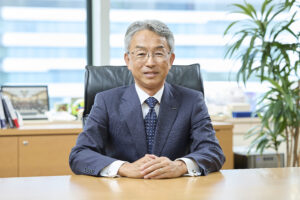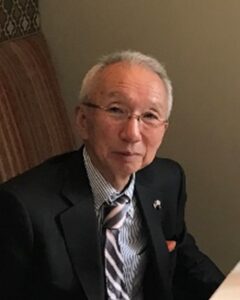72nd MUMEI-JUKU(18/3/2025)
Theme: From Data Infrastructure to Knowledge Base
Guest Speaker: Dr. KUROHASHI Sadao (Director General, National Institute of Informatics)
Dr. Sadao Kurohashi, Director of the National Institute of Informatics and a leading researcher in natural language processing, will present the topic. His research may seem esoteric at first glance, but the results are bearing fruit as generative AI that is deeply embedded in our daily lives. By extension, we are looking ahead to the arrival of “general-purpose artificial intelligence (AGI),” which will rival human intelligence. The United States, China, and other countries are currently engaged in fierce development competition in this field.
As may be fresh in your mind, President Trump held a press conference at the White House on January 21 this year, the day after his inauguration, and in the presence of top executives from OpenAI, Softbank, and Oracle, announced the “Stargate Plan,” which aims to develop AGI with a budget of several tens of trillion yen was invested, with the government and private sectors working together. This news was widely covered by the media and made clear that the U.S. was trying to take the lead in the U.S. AI strategy.
At about the same time, an even more shocking event occurred. It was the announcement of a Chinese version of the generative AI model [DeepSeek] by Liang Wenfeng, founder of the Chinese startup AI company DeepSeek. While this news did not make as big a splash as the Stargate project, it did cause a stir among AI experts. They had previously believed that China was lagging behind in the field of generative AI and that it would be impossible for China to catch up with the US without Nvidia’s cutting-edge chips. However, with DeepSeek, this perception has been completely overturned.
Liang was able to achieve comparable performance without the use of state-of-the-art chips at a fraction of the cost of developing OpenAI. This was described as “A Sputnik Moment” by Oxford University economist Daniel Susskind in the February 1 edition of The Times. While this was seen as the moment in 1957 when the Soviet Union successfully launched the world’s first satellite, Sputnik 1, and Western nations feared that they had ‘fallen behind technologically,’ Susskind notes that the advent of DeepSeek had a similar impact. In fact, Ryang followed this up with DeepSeek-V3 and DeepSeek-R1, programs that rival the latest models of OpenAI and Meta.
The U.S. government has begun to consider countermeasures in response to a situation that could change the competitive dynamics of the global AI market. DeepSeek is not just viewed as a technological success, but also has significant geopolitical implications. It could directly lead to the strengthening of China’s economy, military, and security, which in turn could pose a threat to its democratic system.
What challenges does Japan face in this fierce competition for AI development? In particular, we would like to ask Dr. Kurohashi about the strategies and human resource development that the Japanese government should take. The answers to these questions will not come all at once, but we hope that this interview will provide an opportunity for you to explore the answers.


